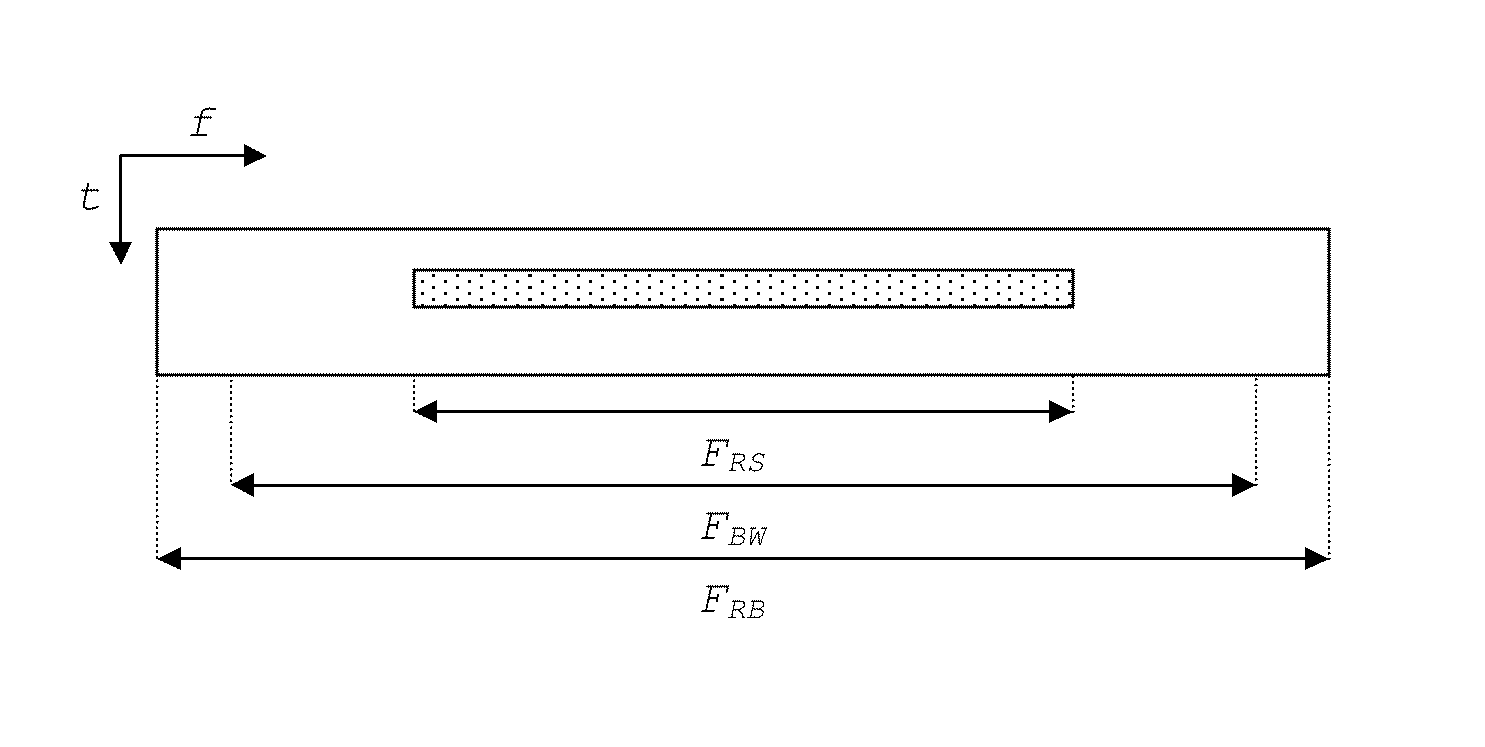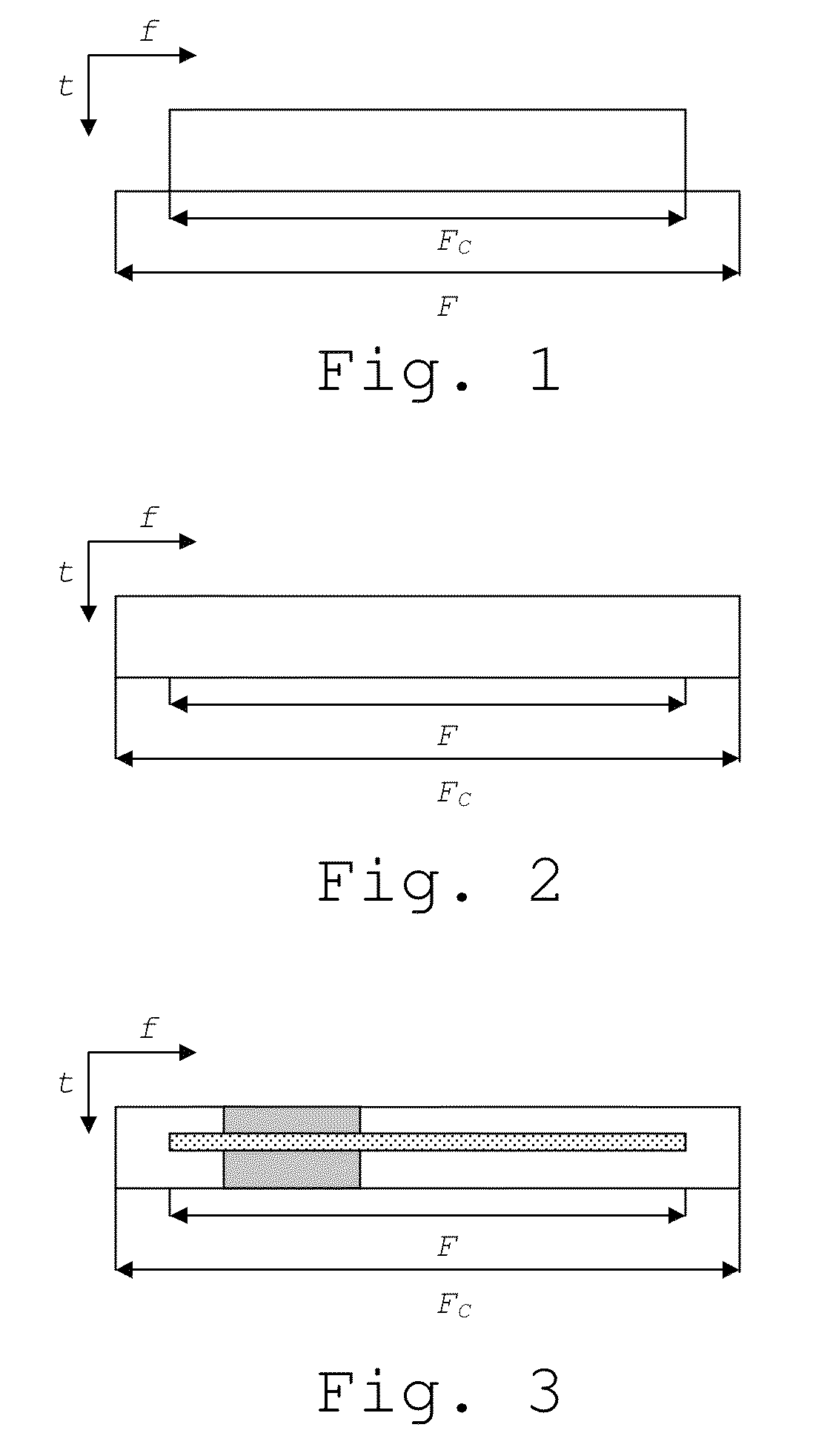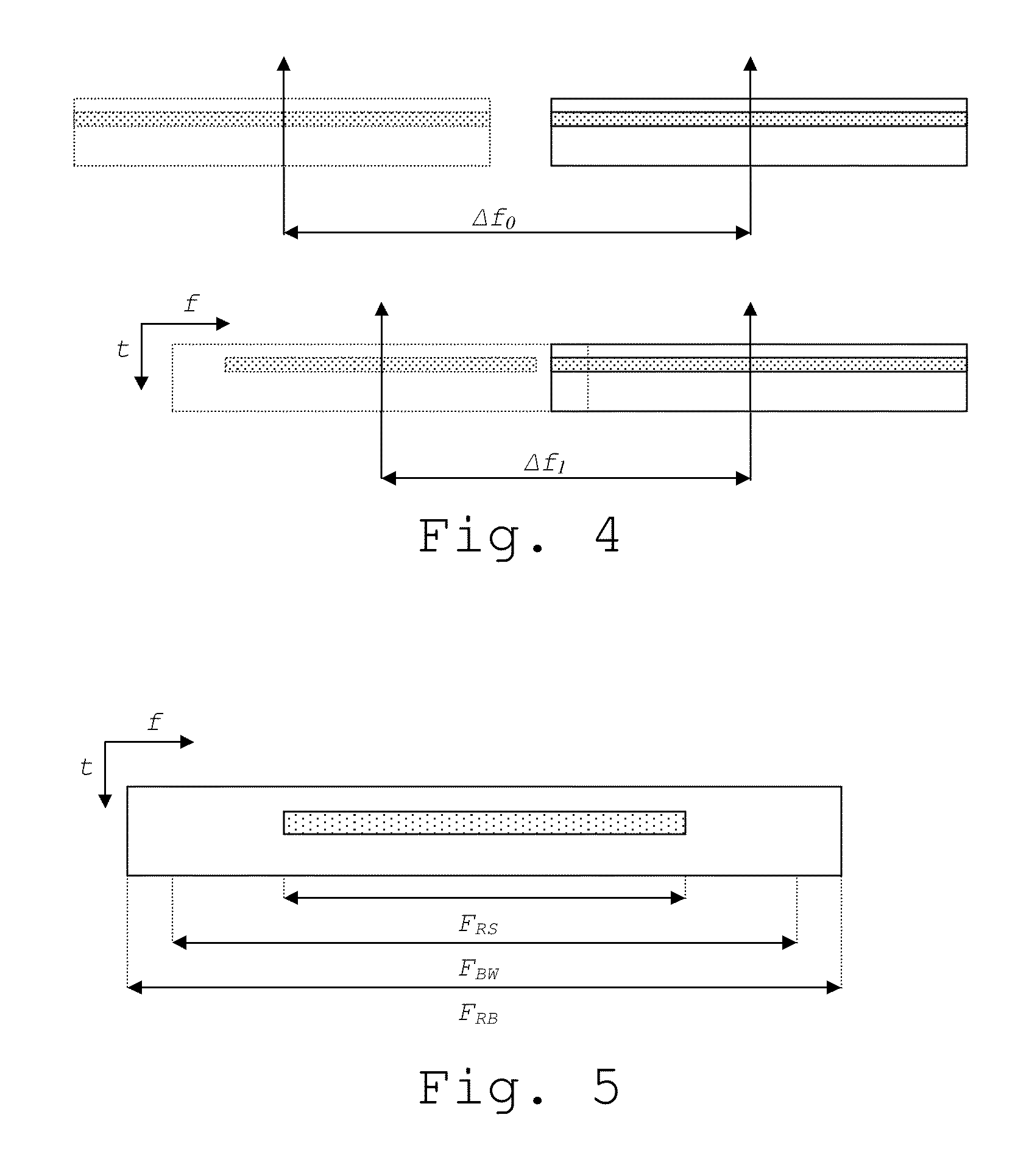Method for arranging transmissions on a downlink carrier
a transmission and downlink technology, applied in the direction of payload allocation, digital transmission, transmission path sub-channel allocation, etc., can solve the problems of increasing equipment cost and complexity, increasing the cost and complexity of equipment, and not being able to specify a large number of bandwidth configurations by a standard, so as to achieve the effect of better utilization of available spectrum resources
- Summary
- Abstract
- Description
- Claims
- Application Information
AI Technical Summary
Benefits of technology
Problems solved by technology
Method used
Image
Examples
Embodiment Construction
[0039]In the following the invention is discussed, often in the context of a Long Term Evolution (LTE) mobile communications system. It should be noted that any such reference to LTE should be considered as an example intended to elucidate the invention. The invention itself is applicable to any mobile radio communications system with the right prerequisites, as discussed below.
[0040]The prior art solutions of extension carrier and carrier segments open up for more flexible usage of the available spectrum. However, a major limitation would occur if these new carrier types also would be confined to a small set of bandwidths. In that case, the bandwidth granularity is not straightforwardly increased. According to the previous example, if 19 MHz is available, a 15 MHz extension carrier may need to be deployed, possibly combined with aggregation of a 3 MHz carrier. Hence, the efficient use of available bandwidth is still a problem of the prior art solutions.
[0041]Suppose a frequency ran...
PUM
 Login to View More
Login to View More Abstract
Description
Claims
Application Information
 Login to View More
Login to View More - R&D
- Intellectual Property
- Life Sciences
- Materials
- Tech Scout
- Unparalleled Data Quality
- Higher Quality Content
- 60% Fewer Hallucinations
Browse by: Latest US Patents, China's latest patents, Technical Efficacy Thesaurus, Application Domain, Technology Topic, Popular Technical Reports.
© 2025 PatSnap. All rights reserved.Legal|Privacy policy|Modern Slavery Act Transparency Statement|Sitemap|About US| Contact US: help@patsnap.com



